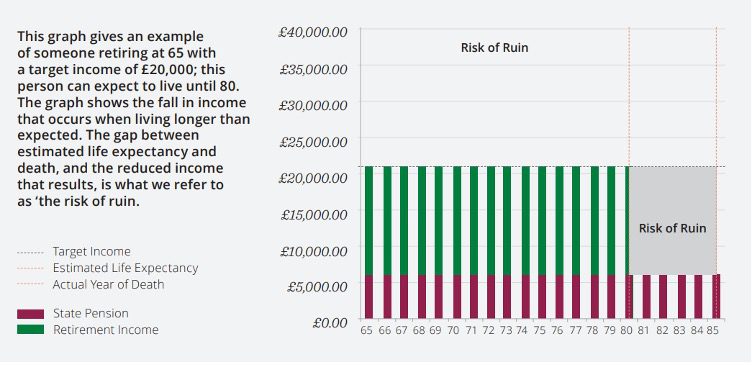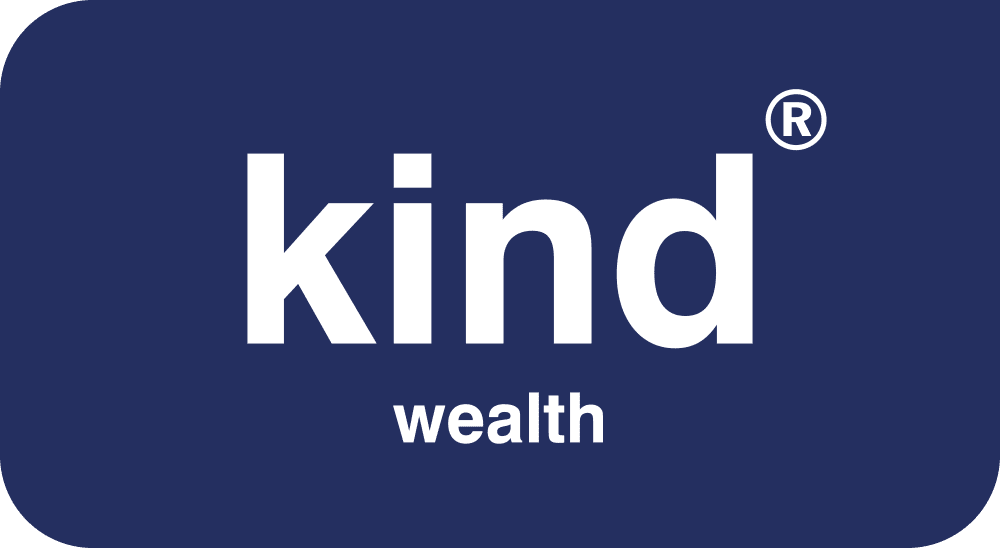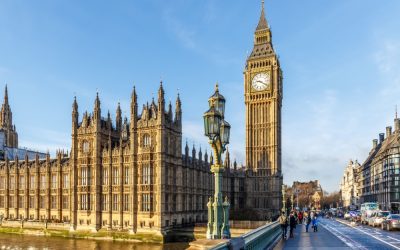Retirement Choices
There has been plenty of coverage in the financial media about retirement freedom and how you can now spend your pension fund as you see fit. However, more freedom and more choices mean you now have more decisions to make.
So, do you see this as an exciting freeing up of your retirement choices and a licence to spend your money how you wish? Or are you worried about making the wrong choice? Maybe you do not know which way to turn.
What does greater freedom mean for me?
Until 19th March 2014, when the Chancellor of the Exchequer, George Osborne, stood to give his budget speech, any choice you had on how to spend your pension fund was restricted by tax law. After all, the government gave away generous amounts of tax relief to encourage people to save for a retirement income, so they made sure that was exactly what you did with the money.
However, the Chancellor announced that in one hit, he would remove all remaining tax restrictions on how pensioners could use their pension pots.
How do I make the right choice?
Retirement freedom creates more choice, but it brings with it more risk. While the earlier restrictions may not have been popular, they did protect us from running out of money.
We now live in an era in which we live longer. We are retired for longer. We need to make our savings last for longer. We can only do this if we make the right choices. We can only make the right choices with the right advice.
In this guide, we will take you through the choices that are on offer, so that you can approach retirement feeling more informed.
Getting Ready for Retirement
Freedom of choice can help you plan and construct your retirement income, but only with the right preparation and advice.
You may be retired a long time
In its report, Retirement Income Uncovered, Old Mutual Wealth discovered some interesting facts from the people they interviewed.
On average, men retire at 64.7 and women at 63.6. At these ages, men can expect to live until 86.7 and women until 89.32 (Source: Old Mutual Wealth – Retirement Income Uncovered). Being retired 20 years or more means you need to plan for an income that funds retirement for this long.
Looking at it another way, at 65 you have a one-in-four chance of living to age 94, and almost a one-in-ten chance of living to 100.
To make your money last this long, you need to plan carefully and as early as possible. Your Kind Wealth financial adviser will help you prepare so that you can avoid the risk of ruin.
Retirement is Changing
With the demise of final salary pension schemes, most people are taking more of a portfolio approach to retirement income. As well as traditional pension savings and the state pension, people are using ISAs and other investments, such as bonds, to supplement their income in retirement.
Also, semi-retirement is becoming more common with people continuing to work part-time in retirement, either through necessity or simply because they want to. In fact, people approaching retirement expect part-time work to contribute 28% of future retirement income (Source: Old Mutual Wealth – Retirement Income Uncovered).
Don’t pay any more tax than you have to
Having spent a long time carefully building your retirement fund, the last thing that you will want to do is give a big chunk of it to the tax man unnecessarily. This is another reason why you need to plan carefully how you use your retirement fund. Take too much out too quickly and instead of being a basic rate taxpayer, overnight you can become a higher rate taxpayer.
By carefully planning with your Kind Wealth adviser, you will work out how best to use your tax-free cash entitlement so that you maximise your annual personal allowance. And if you must draw a large sum from your retirement fund, you can at least do so in full knowledge of the tax implications, so that you do not get a nasty shock.
Tax treatment varies according to individual circumstances and is subject to change.
Planning makes a real difference
Research shows that having a target income and getting the right financial advice can make a marked difference to someone’s retirement income. Retired people without a target have an average yearly retirement income of £18,000. Focus on a target and take advice on how to hit that target, and the average income rises to £24,175 (Source: Old Mutual Wealth – Retirement Income Uncovered).
How does this happen? It’s all about understanding how to use the available products to construct retirement solutions that aim to hit your target. This may mean using annuities, flexi-access drawdown, uncrystallised fund pension lump sum (UFPLS), other investments, or a combination of several options. But the best way to use and how to use them is with professional financial advice.
And even though you may have already started income drawdown, this doesn’t mean that you can no longer invest in a pension plan and enjoy the tax benefits. You can still invest up to £4,000 in a tax year and receive tax relief at your marginal rate of income tax.
In the event of your death
Planning your retirement is not only about your retirement income. Your retirement fund is also an asset, and you need to consider and understand what you want to happen when you die.
Choices exist for dealing with any pension fund you may have left when you die. What happens also depends on how old you are when you die.
If you die before you reach age 75
There are three choices, each receiving different tax treatment:
Pay the remaining fund as a tax-free lump sum to anyone you choose
Use the remaining fund to create a flexi-access drawdown pension for any beneficiary. This will create a pension fund that can be accessed tax-free by the beneficiary to provide an income and/or lump sums. The beneficiary can access the pension fund at any time and does not have to wait until the normal pension access age.
If you die after you reach age 75
Again there are three choices, each receiving different tax treatment:
Navigating the choices
You now have far more freedom in how you use your retirement savings.
However, this freedom of choice can have implications if you get it wrong. For example, you my create a large tax bill that you would not have otherwise had. Also, not all of your pension plans may allow this new freedom of choice. You may have to move the money to a new pension plan that does allow the freedom of choice. This might be a good thing to do; it might just as easily be a bad thing.
You can avoid getting it wrong with the right advice.
Taking a tax-free lump sum
You can take 25% of your pension fund as a lump sum, completely tax-free. This hasn’t changed and has been this way for many years.
One thing that has changed regarding tax-free lump sums is that you no longer have to take it all at once. You are now able to phase taking the lump sum over a number of years.
Creating a retirement income
There are two ways you can use your pension to do this: buy an annuity or invest in flexi-access drawdown.
1. Annuity
An annuity will pay you an income until you die. Guaranteed. This is the annuity’s biggest advantage and makes it the starting point to consider for all of your retirement planning.
1.b Shopping Around – the open market option
You do not have to accept the annuity your pension provider offers you. If you do one thing and one thing only, make sure you shop around for the best annuity that you can get. This may sound like obvious advice, but around 60% of retired people do not (Source: Financial Conduct Authority – 2014 thematic review).
Shopping around for the best annuity can make an enormous difference to your retirement income.
2. Flexi-Access Drawdown
Income drawdown has been around for a while but there were restrictions wrapped around it previously. These restrictions have now gone, creating flexi-access drawdown.
You can think of flexi-access drawdown as a bit like a bank account. You keep control of your pension fund, investing it and drawing down income as you need it, when you need it. You have complete flexibility over how much you take out and how often you take it. Once you have drawn your 25% tax-free cash entitlement, any further withdrawals form part of your total taxable income and incur income tax.
The complete flexibility that flexi-access drawdown gives you is its big advantage.
On the downside, it brings two big risks:
You do not make the investment returns you need to support your withdrawals.

Take it all as cash – the Uncrystallised Funds Pension Lump Sum (UFPLS)
As long as you are at least age 55, you can cash in your pension fund. Provided that you haven’t already touched your pension fund, 25% will be tax-free and the other 75% will form part of your taxable income and incur income tax.
The advantage of UFPLS is the way it enables you to access a large amount of cash, perhaps to generate retirement income in other forms, property for example.
The disadvantages are twofold:
The temptation to spend it on luxuries, such as holidays and nice cars.
The value of pensions and investments can fall as well as rise. You may get back less than you invested.
Tax planning is not regulated by the Financial Conduct Authority”
Here to help you
Managing your finances effectively can be a confusing business. The financial world is complex, and making the right decisions for your future can seem a daunting prospect.
At Kind Wealth, we take pride in offering a personal service that considers your individual circumstances. Your financial situation is unique, so we work hard to understand your goals and aspirations, and make financial recommendations based on a comprehensive and detailed analysis of your needs.
The service we offer you provides a winning combination of professional advice, choice and value.
Whatever your needs in retirement, we can give you a complete financial advice package that ensures you enjoy your new beginning.
We take pride in offering a personal service that takes into account your individual circumstances.



